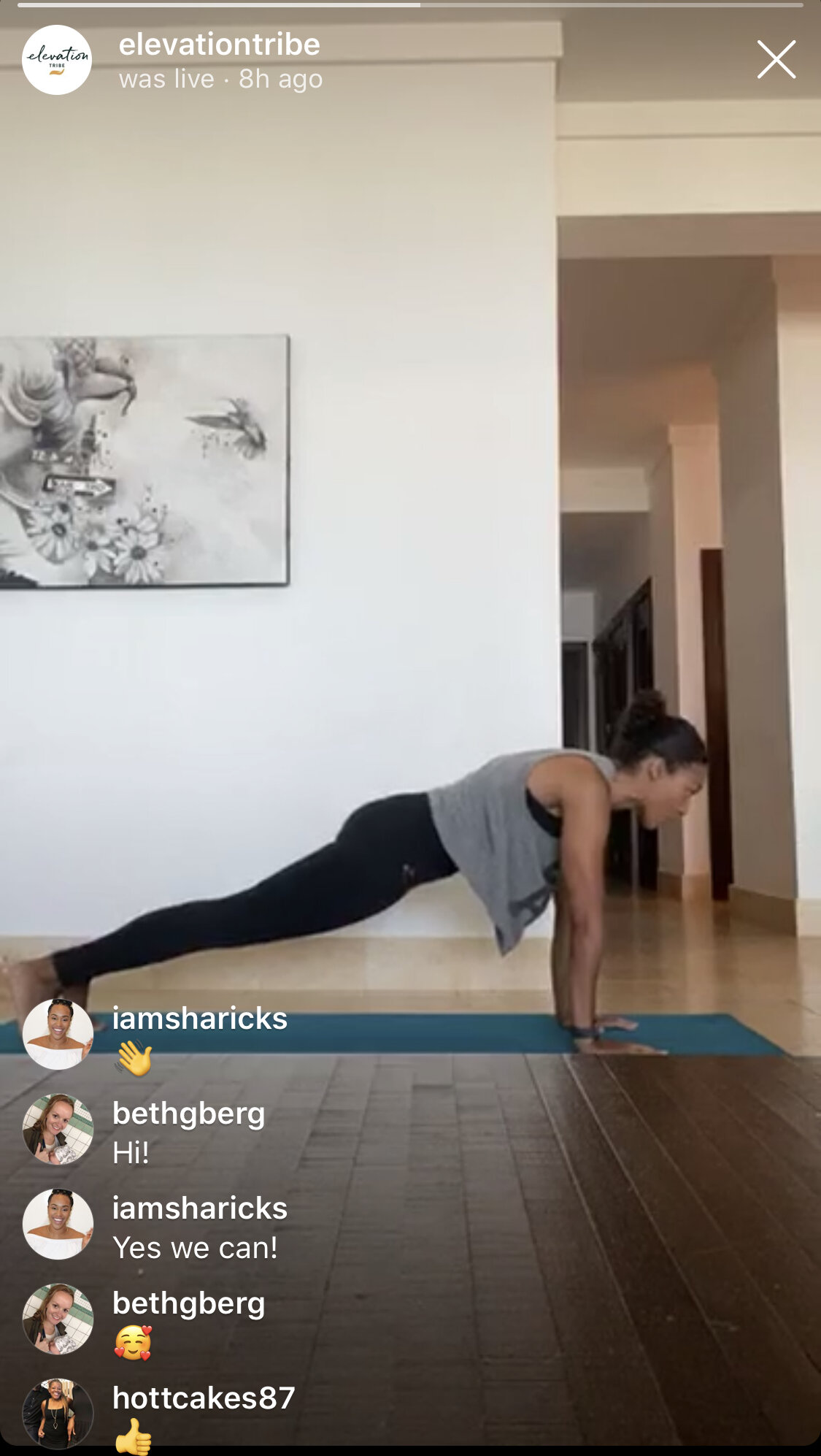Teaching Online?!
Teaching Online?
These Tips Will Help You
Teach Amazing Virtual
Classes That Really Connect
By Stephanie Smith
For the first part of 2020, the global coronavirus pandemic has forced most of the world indoors. Health officials and governments have recommended quarantines and social distancing practices in an effort to stop the spread of the deadly illness. That means people are staying home and away from large public places, including yoga studios. In response, more yoga teachers are offering classes online, even if they hadn’t done so before coronavirus.
Now more than ever, it’s easy to start teaching yoga online--if you've got a stellar internet connection and a smartphone, you're good to go. But how do you create classes that actually connect with people and make them want to tune in repeatedly?
Like many other yoga teachers, I started offering online classes as I was quarantined at home. I have also taken a bunch of online classes from other teachers (including Chrissy and Bibby from Rise + Vibe!) and have been studying what makes a great teacher online. A lot of the same things you’d do to create a fun studio class still apply, like being mindful of various skill levels of students in your class and adding some storytelling and personality to your teaching. But here a few additional things I’ve learned as I’ve started to teach online that might help you:
--Do a dry run. Before you go online, do a dry run of your entire class with a friend or small audience. Make sure your camera or smartphone is in focus and the microphone can pick up your voice. Check out your space--is your background plain and clutter free? Is your mat lined up in the center of your shot, and with enough space to allow for poses that may extend beyond your mat? Is your voice clear, or do you have interference from outside noises, like air conditioners, traffic or other people? Is your wifi strong enough to stream the video (this was my biggest flub: I kept forgetting to test my wifi connection the night before and twice now I’ve scrambled to switch the phone I was using to stream my classes at the last minute!). Try to record yourself in the same setup you will use for your online class before you go live.
--Keep it short. Try teaching shorter classes over your trial runs that allow for a sample of your regular classes. Play with a workshop style class or themed class based on an idea or mantra or certain part of the body. These specific-style classes will help you differentiate yourself from more general classes available online. If someone is looking for, say, a hip opening sequence, you can pop up higher in a Google search if you have a 10-minute hip opener class available on your website.
--Keep it personal. Some of the best online yoga classes I’ve taken have a personal touch. I’ve taken classes where the teacher’s dog cuddles up with them on their mat, or their kids join them for savasana. I’m also amused by seeing a teacher in their well-appointed bedroom or den with fluffy sofas and warm candles. I also like when teachers share their real feelings about our current health crisis--what they’ve been doing during their quarantine or what feelings have popped up and how they’re managing. Seeing and hearing the personal side of a teacher’s practice reminds students that we’re all in the same boat-- we’re all at home, we’re all trying to get by, we’re all figuring out our new way of life day by day.
--Remove all distractions or prepare for them.
Home is where the heart is, but also where distractions are. It’s where our families are, our noisy neighbors and our dirty laundry are. Try to remove as many distractions as possible during practice. Set up in a quiet, uncluttered room in your house or apartment and lock the door to prevent unwanted interruptions. Got an active child who loves to sing and dance naked through the house (like me?) Maybe you set them up with breakfast and their favorite cartoons in another room while you do your practice. When I teach classes from home, my dear husband will take our daughter outside for breakfast al fresco so I’m not interrupted (bless him).
--Stay flexible: Despite best laid plans, sometimes things still interrupt the flow of a class. When I asked Chrissy what’s been key to teaching classes online, she said staying flexible is a must. If the internet goes out in the middle of a class or if your phone dies, adjust, acknowledge the disruption to your students if needed, and keep going. “Make sure it doesn't interrupt the flow of your teaching,” Chrissy said. “Maintain cool.”
Remember, your students understand if things are a bit on the fly. Life right now is a bit on the fly--we’re in the middle of a global pandemic! What’s cool about this time is that we can discover new ways to teach and learn with no expectations and plenty of room to make mistakes. So experiment, play and have fun with whatever form of teaching you choose. Remember, we’re all in this--at home, staying safe, and flowing online--together.
Yoga Alliance has modified it’s best practices to include digital teaching in accordance with local regulations re: COVID 19. To read more about these updates on yoga teaching policies and ethical standards click here to visit their website.
If you’re looking for online yoga resources, fill out the easy form below so we can hook you up with what you need:


